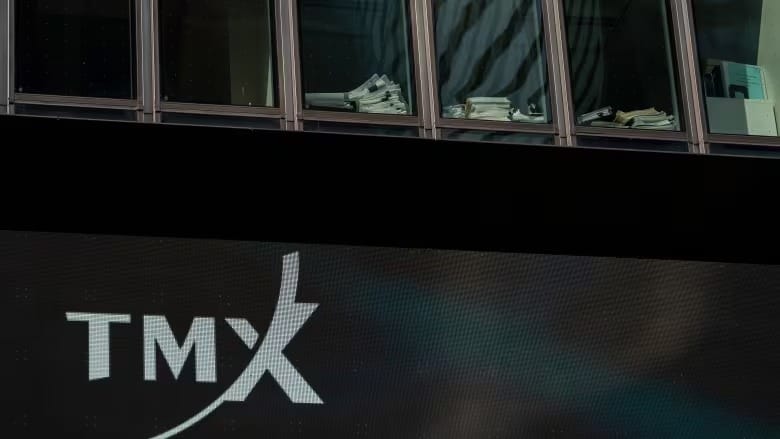Chinese-made EVs are now subject to a 100% tariff. What does this mean for Canadians?
Canada’s surtax on electric vehicles made in China kicks in on Oct. 1

Canada’s new tariff on electric vehicles (EVs) from China is expected to have wide-ranging effects across various industries, potentially impacting more than just the EV market, according to analysts.
Starting Tuesday, a 100 per cent tariff will be applied to Chinese-made EVs, including cars, buses, trucks, and delivery vehicles, following a 30-day consultation period. In addition, a 25 per cent surtax on steel and aluminum imports from China will come into effect on October 15.
This move is intended to prevent affordable, well-made Chinese EVs from dominating the market and to support Canada’s emerging EV sector. However, critics warn that the tariff could have unintended consequences, such as hindering environmental goals and affecting other sectors, especially as the risk of a trade war looms.
"We don't see it as very helpful," said Andrew Bell, a director with the Electric Vehicle Association of Alberta. Bell, who has been advocating for EV adoption for over a decade, described the tariff as an "unnecessary barrier," arguing that it would essentially double the price of Chinese EVs, making them less accessible.
"Here, the Canadian government is trying to encourage Canadians into electric vehicles. Here's a high-quality, low-cost option," he added, referencing the Seagull from Chinese automaker BYD, priced at around $13,000 CAD, which isn’t yet available in Canada.
Chinese automakers have been lobbying the federal government to impose high tariffs to prevent an influx of affordable vehicles from entering the market.
In addition to the EV tariff, Canada is undergoing a 30-day consultation on possible surtaxes for Chinese batteries and critical minerals, citing concerns about unfair competition and the lack of stringent labor and environmental standards in China, according to the Department of Finance.
"Level the Playing Field"
Prime Minister Justin Trudeau announced the EV tariff in late August, under pressure from industry stakeholders. He explained that the goal was to "level the playing field for Canadian workers," criticizing China's state-subsidized production practices.
"Actors like China have chosen to give themselves an unfair advantage in the global marketplace, compromising the security of our critical industries and displacing dedicated Canadian auto and metal workers. So, we're taking action to address that," said Trudeau.
Canada’s decision followed months of speculation about how it would respond to similar measures by other countries. Earlier this year, the U.S., Canada’s largest trading partner, imposed a 100 per cent tariff on Chinese EVs, while the European Union opted for a more moderate increase in its surtax from 10 per cent to 36.3 per cent.
Canada’s automotive sector welcomed the move, as it is seen as beneficial for job creation and research and development.
"We want the high-quality jobs for students and all the trickle-down effects of the automotive sector," said Olivier Trescases, an engineering professor at the University of Toronto and director of its Electric Vehicle Research Centre. Trescases emphasized the importance of government investment in innovation, which he believes will create jobs and foster economic activity in Canada.
Striking a Balance
Some industry experts, like Gil Lan, an associate professor at the Ted Rogers School of Management at Toronto Metropolitan University, were hoping for a more cautious approach, similar to that of the European Union.
"I sense that there must have been a strong political pressure on Canada, given that it's an election year in the United States," said Lan. He also expressed concerns about the federal government’s goal of phasing out gas-powered vehicle sales by 2035, noting that Canada’s EV industry is still in its early stages compared to China’s well-established sector.
"There's a lot of catching up to do," Lan said, pointing to the federal government’s multibillion-dollar investments in EV infrastructure, including battery plants in St. Thomas and Windsor, Ontario, and an expansion of Honda's plant in Alliston, Ontario, to produce EVs.
However, much depends on the success of Canada’s domestic EV industry, especially as China has been heavily investing in its EV sector for nearly two decades.
China’s Dominance in the EV Market
Frik Els, head of Adamas Inside, a news division of Adamas Intelligence, a Toronto-based research firm specializing in strategic metals and minerals, noted that China "totally dominates the market now." He explained that mining operations essential to EV production, such as cobalt and lithium extraction, can take decades to establish.
According to data from Adamas Intelligence, China accounts for 55 per cent of the global battery power used in EVs, derived from the mining of these critical minerals.
Domestically, China hit a significant milestone this summer when over half of all vehicles sold in July were EVs and plug-in hybrids, a feat previously only achieved by Norway, where EVs account for over 80 per cent of vehicle sales.





